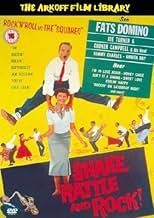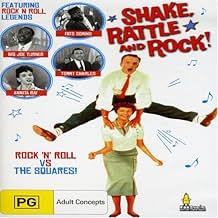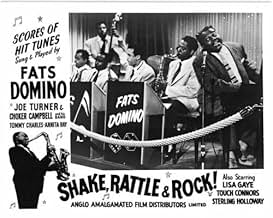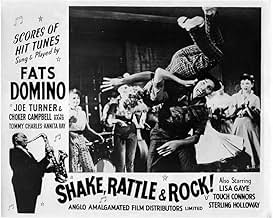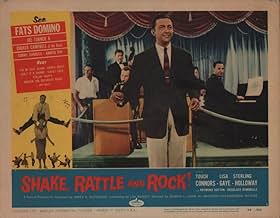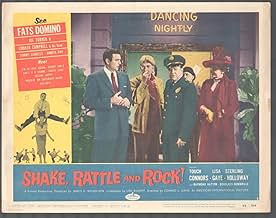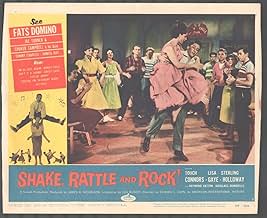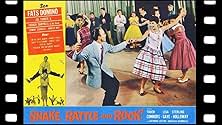Agrega una trama en tu idiomaA group of concerned adults try to ban rock and roll music in their town because they think that the music promotes juvenile delinquency. It's now up to a disc jockey and a hipster to defend... Leer todoA group of concerned adults try to ban rock and roll music in their town because they think that the music promotes juvenile delinquency. It's now up to a disc jockey and a hipster to defend the music in a televised trial. The movie also features several rock and roll performance... Leer todoA group of concerned adults try to ban rock and roll music in their town because they think that the music promotes juvenile delinquency. It's now up to a disc jockey and a hipster to defend the music in a televised trial. The movie also features several rock and roll performances, most notably from Fats Domino.
- Garry Nelson
- (as Touch Connors)
- Carlos
- (as Rosie & Carlos)
- Eustace Fentwick III
- (as Douglas Dumbrille)
Opiniones destacadas
The music in the film deserves a better showcase.
The story is about a teen hangout called the Black Eagle Club, where troubled youths can channel their time into wholesome pursuits. The guys who run it also promote a local TV dance show where the kids listen to early rock and roll and swing dance.
A group of older adults mobilizes to stop the dancing and the music on grounds that such teenage activities lead to bad behavior. Of course the jitterbug has already been around since the thirties, so the issue is a little dated, but some adults really were concerned about the influence of Elvis, who had already been on the national scene for a few years. Fats Domino, and Big Joe Turner (who had also been around since the thirties), are featured in the film, though they are already somewhat passé by 1956.
The best moments of the film are the upbeat musical sections, like the boogie woogie, and the talented dancing. Petticoats fly as Rosie and Carlos, especially, take to the floor. But most of the music is not presented in its best light.
The worst aspects of the film are the canned laughter and the ridiculous portrayal by Sterling Holloway, who is supposed to be a jive-talking hipster. The dialogue he is given is embarrassing and annoying. There is also another actor doing an impersonation of Sheldon Leonard in a performance that adds nothing to the story.
In the end, the film features an on-air showdown between the blue-nosed adults and the teens that is supposed to be an actual legal procedure to determine which side is justified.
Whatever the entertainment value, the cast is full of familiar faces from the 40's- the gnome-like Percy Helton, Groucho Marx's favorite foil Margaret Dumont, arch-villain Douglas Dumbrille, and a few others. In that sense, the flick's a sort of odd blending of old and new.
Anyway, as someone coming of age during that period, I really enjoyed seeing pretty girls in swishy skirts twirling across the dance floor. And how well I remember R&R exploding on the teen scene, it's hedonistic bent a welcome contrast to years of war and needed conformity (WWII, Korea, and the ongoing Cold War). But as a showcase of hit music from the era the movie's limited at best, despite the title.
¿Sabías que…?
- TriviaThe film of natives shown in the 'trial' is of Australian aborigines dancing.
- ErroresThe opening credits spell Fats Domino's name as "Antione", rather than "Antoine".
- ConexionesFeatured in It Came from Hollywood (1982)
- Bandas sonorasI'm In Love Again
Written by Fats Domino (as Antione "Fats" Domino) and David Bartholomew
Sung by Fats Domino
on Imperial Records
Selecciones populares
Detalles
Taquilla
- Presupuesto
- USD 79,000 (estimado)
- Tiempo de ejecución1 hora 12 minutos
- Color
- Mezcla de sonido
- Relación de aspecto
- 1.37 : 1
Contribuir a esta página


